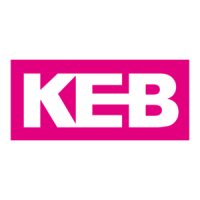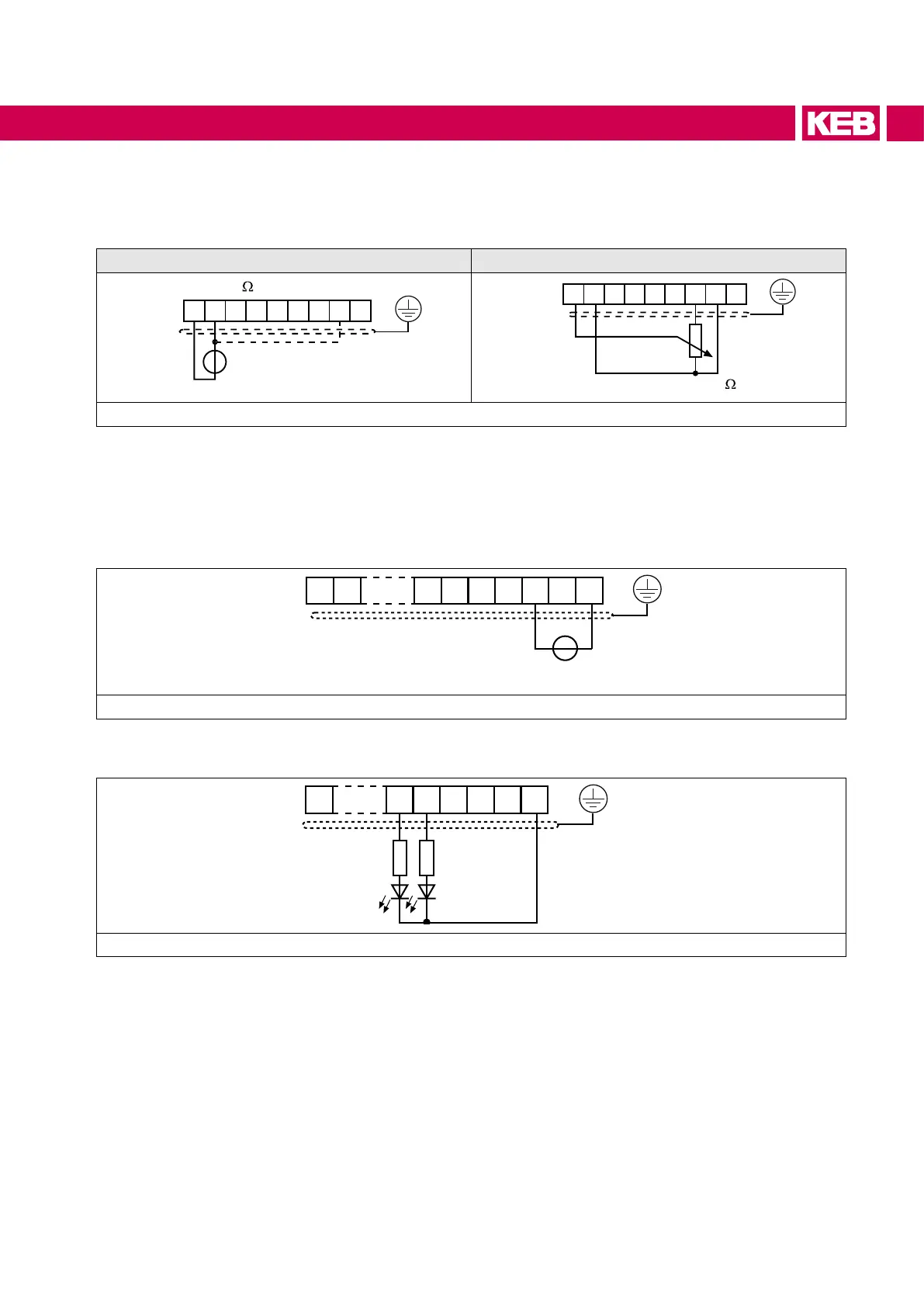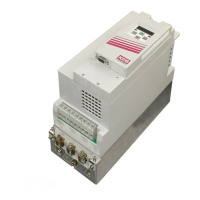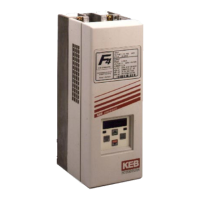

Do you have a question about the KEB COMBIVERT 19F5 Series and is the answer not in the manual?
| Series | COMBIVERT 19F5 |
|---|---|
| Category | Inverter |
| Output Frequency | 0-400 Hz |
| Power Range | 0.75 kW to 630 kW |
| Input Voltage | 380-480 V AC |
| Output Voltage | 0-480 V AC |
| Control Method | Vector control, V/f control |
| Protection Features | Overcurrent, overvoltage, undervoltage, overtemperature, short circuit |
| Communication Interfaces | CANopen, Profibus, EtherCAT, Modbus |
| Cooling Method | Air-cooled, liquid-cooled |
| Ambient Temperature | -10 to +50 °C |
| Relative Humidity | 5 to 95% (non-condensing) |
| Enclosure Rating | IP20 |
| Storage Temperature | -25 to +70 °C |
Explains hazard symbols and signal words used in the manual.
Information on EC declaration of conformity and CE mark compliance.
Details on warranty terms and manufacturer's liability.
Information on requesting further assistance and copyright notices.
Standards directly applicable to the drive converter for compliance.
Standards that drive converter standards refer to for context.
Standards for the drive converter's operating environment and installation.
Specifies qualified electrical personnel for manual use.
Guidelines for safe handling, storage, and usage.
Critical steps and warnings during device installation.
Essential safety measures for electrical wiring and connections.
Ensuring electromagnetic compatibility during installation.
Procedures for voltage testing and insulation measurement.
Warnings and precautions for initial start-up and normal operation.
Recommended maintenance tasks and frequency.
Instructions and warnings regarding device repair.
Guidelines for the proper disposal of electronic devices.
Overview of COMBIVERT F5-AIC capabilities and operational needs.
Explanation of input/output terminal interpretation for AIC.
Permitted uses and limitations of the F5-AIC.
Potential hazards and prohibited operations.
Explanation of the coding system for product identification.
General conditions for device operation and storage.
Specifics on temperature, humidity, and altitude limits.
Vibration and shock limit values for different conditions.
Contamination limits and environmental interactions.
Device classification and electromagnetic compatibility (EMC) data.
Table detailing device sizes, housing types, and cooling modes.
Key electrical parameters for input and output stages.
Graphical representation of overload capabilities and error triggers.
Specific filters required for sinusoidal current characteristics.
Components and function of the common mode filter.
Alternative filters and chokes for EMC compliance.
Table of DC fuses with size, voltage, and current ratings.
Different fuse holder and fuse combinations for DC fusing.
Requirement and specs for precharging resistor in master-slave setup.
Physical characteristics and links to detailed manuals.
Wiring diagram and components for EMC-compliant cabinet setup.
Key directives for stationary installation and environmental protection.
Table detailing terminal functions for mains and DC voltage inputs.
Notes on managing current and capacity in DC bus connections.
Diagrams and assignments for terminal blocks in different housings.
Diagrams and assignments for terminal blocks in R and U housings.
Diagrams and assignments for terminal blocks in P housing.
Table specifying wire sizes and torque values for terminals.
Connection details and power consumption for external fans.
Wiring and usage for KTY and PTC temperature sensors.
Circuit diagrams for different input types and pre-charging.
General instructions for the following circuit examples.
Schematic for connecting the power unit with AIC/LCL filter.
Schematic for AIC/LCL filter and common mode filter connection.
Schematic for master-slave configuration with AIC/LCL and common mode filters.
Wiring diagram for the control logic and connections.
Explanation of the step-by-step start-up procedure and timing.
Pinout and default assignment for the control board's terminal block.
Recommendations for connecting control inputs to prevent interference.
Wiring examples for digital inputs using internal or external voltage.
Wiring examples for analog inputs using external or internal setpoints.
Procedure for connecting an external voltage supply to the control board.
Wiring diagram for digital outputs.
Wiring and protection for relay outputs.
Wiring diagram for analog outputs.
Wiring for voltage output used for control elements.
Using a special cable for remote operation via PC.
Description of the optional digital operator for local control.
Navigating menus, changing parameters, and resetting errors.
Understanding the password protection levels and access modes.
Features of the interface operator including serial and diagnostic ports.
Description of the X6B interface for PC communication.
Pinout and signal meaning for the X6C interface.
Instructions for connecting PCs to RS232 and RS485 interfaces.
Diagrams for full duplex and half duplex RS485 wiring.
Information on operators for remote control applications.
Guidelines for sizing the COMBIVERT F5 AIC based on input current.
Table of technical specifications for sizing drive converters.
Specific data for AIC devices, including charging currents.
Procedures for installing liquid-cooled drive converters.
Specifications for heat sinks and maximum operating pressure.
Compatibility of materials with coolants to prevent corrosion.
Coolant quality standards, pH, and additive recommendations.
Guidelines for maintaining optimal coolant temperatures.
Warnings and precautions against moisture condensation.
Recommendations for connecting to closed or open cooling circuits.
Graph showing pressure drop based on coolant flow rate.
Diagrams for master/slave and master/slave/slave cooling circuit connections.
Graph illustrating flow rate requirements based on heat load.
Diagrams for parallel cooling circuit connections.
Procedures for emptying and preparing the cooling circuit for storage.
List of document versions, dates, and changes.











